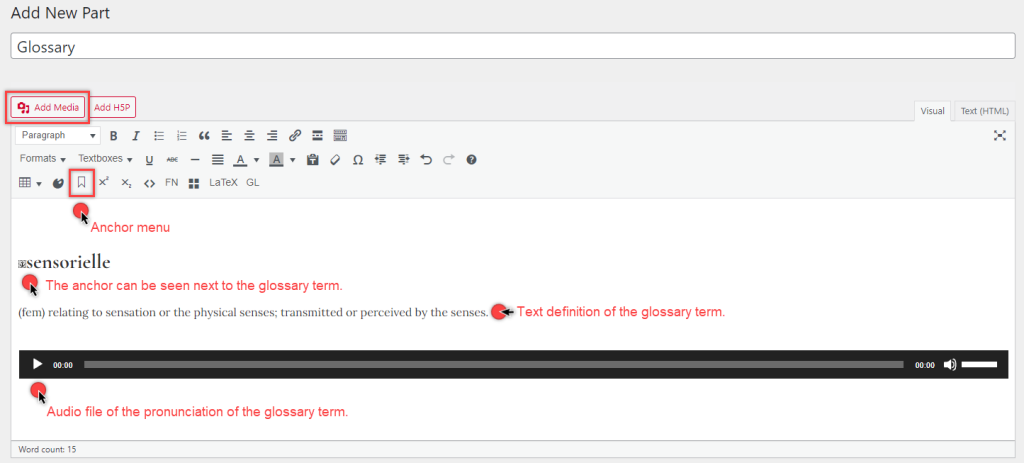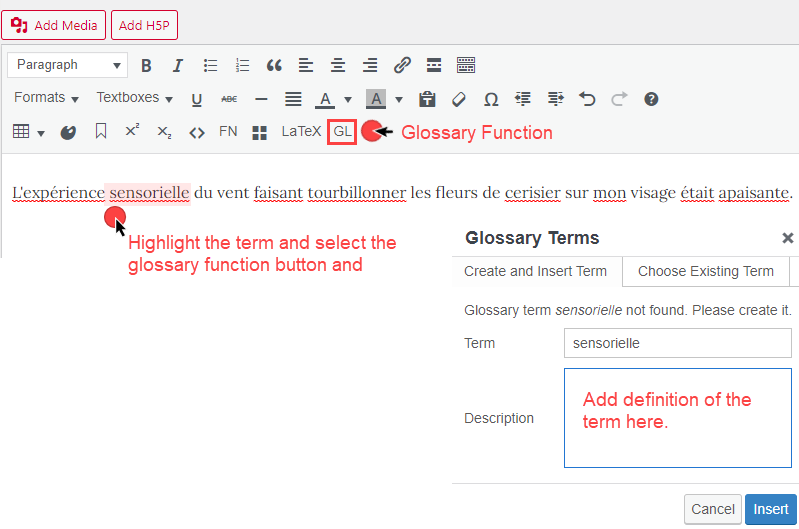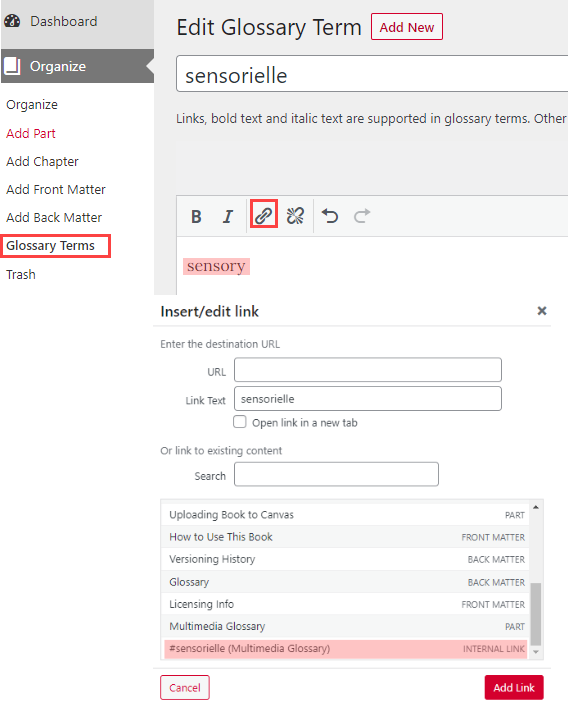Adding Media to the Glossary
Pressbooks allows you to create and display glossary terms throughout your book content and to display an automatically generated alphabetized list of all selected glossary terms in your book.
Resourcces
To learn how to use the glossary functionality in Pressbooks, review the following guides:
Issue
The glossary functionality in Pressbooks allows for the automatic generation of a Glossary at the end of the book; however, the glossary list is limited to textual content only. Images, audio, and video are not compatible with the glossary functionality. This has some limits for users who wish to provide audio-visual descriptions of glossary terms For example, language learning texts may want to include an audio file of the pronunciation of a glossary term.
Solution
A solution to develop a glossary with media files is to manually develop the glossary using anchor links and the Media Library.
Example – Let’s Read French
Somayeh Kamranian, a sessional instructor of the French language arts in the Department of French, Hispanic and Italian Studies at British Columbia University, developed the Let’s Read French Books reader. The book aims to make reading literary books easier for students by creating an open textbook reader using Public Domain 19th-century French literature.
The text uses the glossary to provide students with the definition of the term and pronunciation using audio files.
To experience the multimedia glossary in action, go to the Let’s Read French Books example – https://pressbooks.bccampus.ca/letsreadfrenchbooks/
The process below is working with audio files.
Step 1 – Upload Files to the Media Library
- Go to the Dashboard, select Media from the menu, and Add New.
- Drag and drop all the files you will be using for your glossary or use the upload button.
- Select the Edit Media link to rename the image if needed and add attribution details including licensing.
Step 2 – Create a Glossary Page
- Go to the Dashboard Menu, select Add Part from the Organize menu, and Title the part Glossary
- Add the glossary term to the page. Consider putting the term under an H1 accordion heading to limit the issue of long page scrolling, To turn an H1 heading into an accordion, review the Web Options section of the Appearance guide.
- Place your cursor next to the glossary term.
- Create an Anchor link by selecting the ribbon image on the menu. Name the anchor the same as the glossary term without spaces.
- Add the textual glossary definition and audio file underneath the term using the Add Media button.
- Save

Step 3 – Add Glossary Term to Text
- Highlight the glossary term where you want it to appear in the text and select the GL function.
- Add the definition of the term in the Glossary Terms box that appears
- Some code will appear on the page once you have done this. Leave the code as is.
- Save

Step 4 – Edit the Glossary Term
- Go to the Dashboard, and select Glossary Terms under the Organize menu
- Highlight the term and click the Insert/Edit Link button
- Add the full URL of the glossary chapter, followed by /#anchorname (the anchor name you created), or scroll through the list to find the anchor link.
- Save

A glossary is an alphabetical list of terms in a particular domain of knowledge with the definitions for those terms. (Wikipedia, CC BY SA 4.0)


